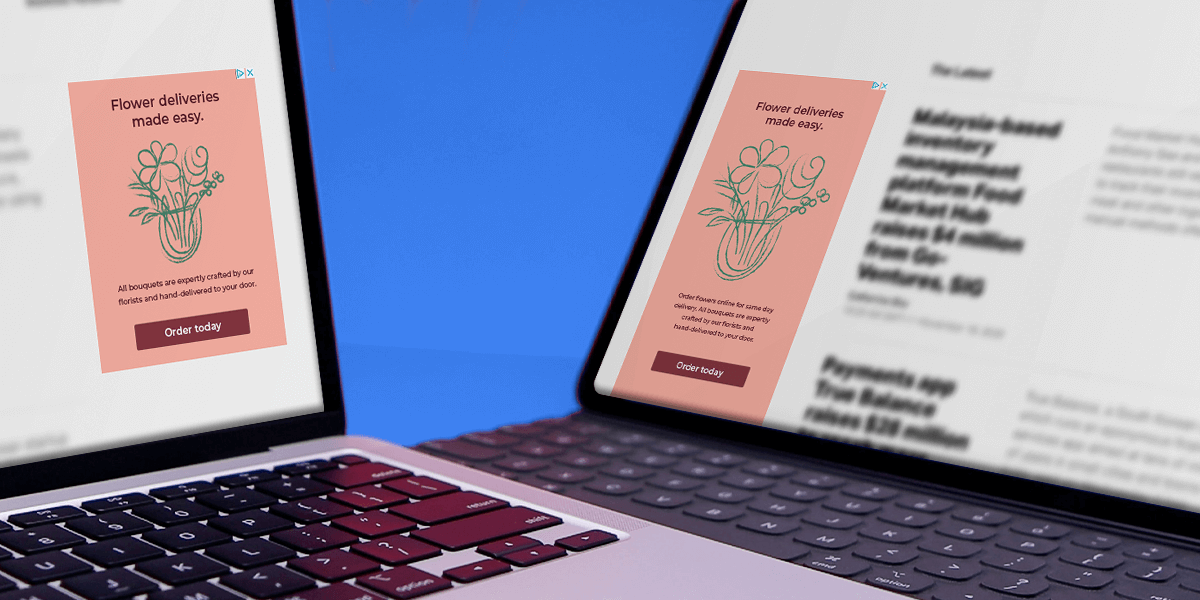Introduction
Translation often gets overlooked. It’s either not given the prominence it demands, or worse it’s an afterthought. The truth is translation is far more important. In today’s interconnected world, effective translation is an asset. It doesn’t matter which industry you’re in, whether it’s e-commerce, iGaming, or finance, talking the language of your customers is a priority.
Translation has been at the heart of Bannerflow from the very beginning. From its earliest irritation to today, easy translating is a key component. The reason? Founder Daniel Jacobsson’s first-hand experience of making ad campaigns for over 20 different markets. Daniel knew just how important good translations were for effective copy and creative. But why is he – along with many other business leaders – still right?
Just Google Translate it? Er, no…
Let’s get things rolling…Google translate (and other free services). Perennial worldwide favourite and loathed by foreign language teachers all over. Yet, undeniably one of the most important developments in translation in the 21st century. There’s no doubting Google Translate is a brilliant tool. After all, Bannerflow itself offers a quick Google translate option for copy. But for professional purposes, don’t rely on it just yet. Allow me to elaborate further through this rather brilliant (and award winning) ad by translation services company, ElaN Languages:
You get the message, right? The “Taste the Translation” ad shows the importance of using a professional translation service for documents and copy where careful phrasing matters. A cheapskate business running its content in bulk through free tools like Google Translate is always going to get found out. That’s not to say recent changes to Google Translate haven’t improved the service. Google adding machine learning capability is only going to make it more precise. Likewise Amazon launching a similar service will help too.
The embracing of artificial intelligence (AI) by Google is probably the future for automated translation. In fact AI has the potential to significantly reshape the translation sector, as it’s already doing to many other industries. However, in a recent English to Korean test, human translators were pitted against machine translation and 90 percent of the automated translation was judged “grammatically awkward”. Yes, Korean is notorious for being a challenge but machine translation isn’t quite ready just yet.
Translation developments across sectors
Translating enables businesses not to stand still but improve and evolve. In recent years, good translation has become ever more prominent. Sites that began with English as their primary language are realising that in order to grow they need to provide both better, and more translated text. Take Instagram for example, according to the Drum, Instagram is embracing automatic translation. The social network is reportedly looking to inject extra life into posts, user bios, and captions by automatically translating them into the viewer’s language. The idea is to make the content potentially appeal to a global audience.
Another example is online publication Business Insider. A publication currently experiencing rapid growth across the world. One of the reasons for this growth could be its understanding of local markets and stories. Part of this success comes from its approach to translation. According to managing director, Julian Childs: “Trying to reach multiple audiences across Europe is always challenging because of local languages. A basic translation looks like a basic translation to a German reader.” To combat this, Business Insider employs local journalists and translators from all over the world and then effectively remotely combines them into a worldwide editorial team. This offers Business Insider the nuance to fully translate reports, data, and stories into language that all its readers in different markets can understand.
Translating a display ad campaign
Online display advertising is a perfect example of why good translation is important – particularly with many companies advertising to multiple markets. But it is also offers a glimpse of both the good and bad aspects of the translation process. The good: successful producers of online display are precise, and use effective copy provided by teams of human translators. Rather than relying on the free tools discussed earlier! The bad: the time it takes to translate, copy not working, and ads becoming inflexible. All of which given the nature of digital banner ads seems rather irregular but why is this?
Building banner campaigns for numerous markets is complex but the process of translating can be tedious. According to Daniel Jacobsson, one of the reasons for easy translation in Bannerflow was to reduce “the pain of translation”. For Daniel, who began as a designer, it was the process of getting the translations that was problematic. With over 25 languages, a translation manager, and multiple spreadsheets, a simple tweak could side-track a whole campaign. “We would create a campaign with English copy but then discover that the copy in another language would need to be changed or the creative altered. We’d have to ask the translator to find a shorter sentence, or word. It was a series of feedback loops that sometimes just went on and on. It could take anything from 2 days to 2 weeks before you had all of the translations in place.”
Not good but there was a solution…
Translation via Bannerflow
Daniel Jacobsson made easy translation a key component of Bannerflow. He merged the role of the translation manager into the product. And offered translators the ability to see campaign copy in context and send it directly to a designer. According to Daniel, “being able to see all of the different text versions with Bannerflow helps reduce copy mistakes when translating. With Bannerflow a translator can see the ad and make the right call. It means they can play around with the copy in context and find a better line.” The process is simple and effective, and has proved beneficial for designers, marketers, and translators alike. Below is a video which explains the functionality in more detail.
Translations from Bannerflow on Vimeo.
There were additional benefits to building this service into Bannerflow too. “The majority of our customers work in multiple markets and need local messages. But for clients who work in only one market, the same featured applied to them. They want to create multiple text versions. Quickly adding copy changes, trying out new messages, being more relevant, tailoring messages to specific target groups, even specific geographic places within that market.” Daniel’s solution to the problem of translating display advertising is providing marketing teams with unforeseen benefits!
Future developments in Translation
Developments in translation are constant and ever changing. Some believe (and have tested) that even today a translator working to correct the output from a machine translation makes for higher productivity and a quicker translation. The near future according to Ed Bussey, the CEO and founder and founder of Quill, will see humans remain prominently in the loop. “Machine translation will do the heavy lifting and people will edit the content. This form of augmented intelligence is likely to be prevalent long before we see standalone artificial intelligence.”
In fact it’s hard to imagine robots completely replacing human translators. Common translation questions are often related to cultural references. In fact, an understanding of culture is as important as the text itself. An AI would need to be taught to understand political, historical, and cultural contexts, in a way that would safeguard against awkward errors.
One day in the far future it’s likely that machine translation services will replace a human but currently? No. For Bannerflow’s Daniel Jacobsson machine learning has “already shown great improvements but it’ll doesn’t yet get the complexity of language. Especially for marketing, it’s never quite a straight translation. You need to know the nuances to make good copy and it’s hard to train a computer to do that. You’ll always need a human touch.”
Conclusion
When translating today, in-house and external translators are always going to offer you security and nuance. Yes, machine translating services have got better! But ultimately the most important tool at your disposal is still the human mind. Avoiding issues of mistrust and brand damage are easy when your care about your translated copy. While translated material allows businesses to reach beyond just a few markets. If you want to go global: invest in translation.
But spare a thought for Japanese translators. It turns out that the coarse and succinct language of some particular copy is difficult to translate – both for machine and human alike.






